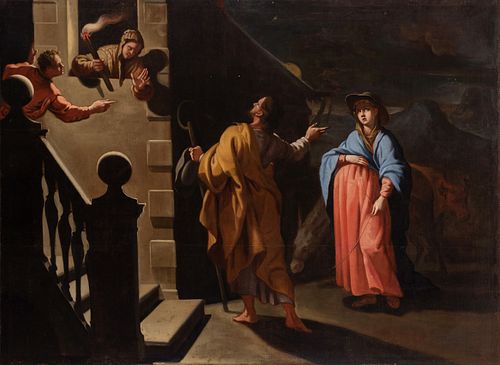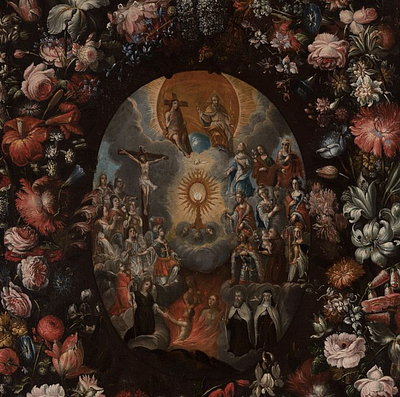Spanish or Italian school; ca. 1700 "The Arrival of the Virgin and St. Joseph in Bethlehem". Oil on canvas. Re-tinted.
Lot 92
About Seller
Setdart Auction House
Carrer Aragó 346
Barcelona
Spain
Setdart Subastas was born in 2004 and is currently the first online art auction in Spain with solidity, prestige and reliability guaranteed by our more than 60,000 users. Setdart has a young, dynamic and enterprising team ready to successfully manage the purchase and sale of art works through custom...Read more
Estimate:
EUR€3,000 - EUR€4,000
$3,225.81 - $4,301.08
Absentee vs Live bid
Two ways to bid:
- Leave a max absentee bid and the platform will bid on your behalf up to your maximum bid during the live auction.
- Bid live during the auction and your bids will be submitted real-time to the auctioneer.
Bid Increments
| Price | Bid Increment |
|---|---|
| EUR€0 | EUR€10 |
| EUR€200 | EUR€25 |
| EUR€500 | EUR€50 |
| EUR€1,000 | EUR€100 |
| EUR€3,000 | EUR€200 |
| EUR€5,000 | EUR€500 |
| EUR€10,000 | EUR€1,000 |
| EUR€20,000 | EUR€2,000 |
| EUR€50,000 | EUR€5,000 |
About Auction
By Setdart Auction House
Jul 14, 2021
Set Reminder
2021-07-14 06:30:00
2021-07-14 06:30:00
America/New_York
Bidsquare
Bidsquare : OLD MASTERS
https://www.bidsquare.com/auctions/setdart-auction-house/old-masters-7202
Setdart Auction House sofia@setdart.com
Setdart Auction House sofia@setdart.com
- Lot Description
Spanish or Italian school; ca. 1700 "The Arrival of the Virgin and St. Joseph in Bethlehem". Oil on canvas. Re-tinted. Presents repainting and restorations. Size: 119 x 165 cm. In a dramatic illuminated scene, some characters lean out of the window, to listen to the supplications of Joseph and Mary, who are outside. Joseph with his back to the viewer and looking directly at the characters in the window, seems to adopt an imploring attitude, pointing to Mary, who stands out for her tired gesture, with a distressed face and her hand resting on her belly. This development of the scene invites us to think that it is the moment in which St. Joseph and Mary travel to Bethlehem, because by decree of King David, all children must be registered in that city. The moment that the work captures shows how they were denied accommodation, so that they had to resort to a manger. It is a previous moment, where the author does not try to show the joy of the birth of Christ, which takes place moments later. Therefore, it is a moralizing scene that invites the viewer to reflect on the human condition, on humility and charity, values proper to Christianity. Baroque painting, both Italian and Spanish, is one of the most authentic and personal examples of art, because its conception and form of expression arose from the people and the deepest feelings that nestled in it. With the economy of the State broken, the nobility in decline and the high clergy burdened with heavy taxes, it was the monasteries, parishes and confraternities of clerics and laymen who promoted its development, the works sometimes being financed by popular subscription. Sculpture was thus compelled to embody the prevailing ideals in these environments, which were none other than religious ones, at a time when the counter-reformist doctrine demanded from art a realistic language so that the faithful would understand and identify with what was represented, and an expression endowed with an intense emotional content to increase the fervor and devotion of the people. The religious subject is, therefore, the preferred theme of Spanish painting of this period, which in the first decades of the century starts from a priority interest in capturing the natural, to progressively intensify throughout the century the expression of expressive values, which is achieved through the movement and variety of gestures, the use of light resources and the representation of moods and feelings.
- Shipping Info
-
In-house shipping available. Please inquire at admin@setdart.com.
-
- Buyer's Premium



 EUR
EUR CAD
CAD AUD
AUD GBP
GBP MXN
MXN HKD
HKD CNY
CNY MYR
MYR SEK
SEK SGD
SGD CHF
CHF THB
THB













